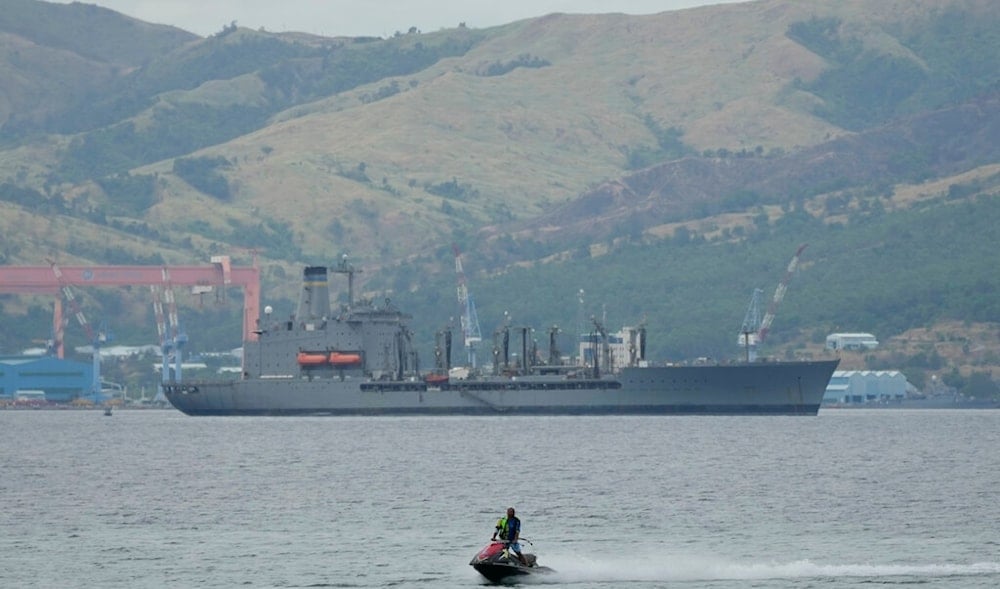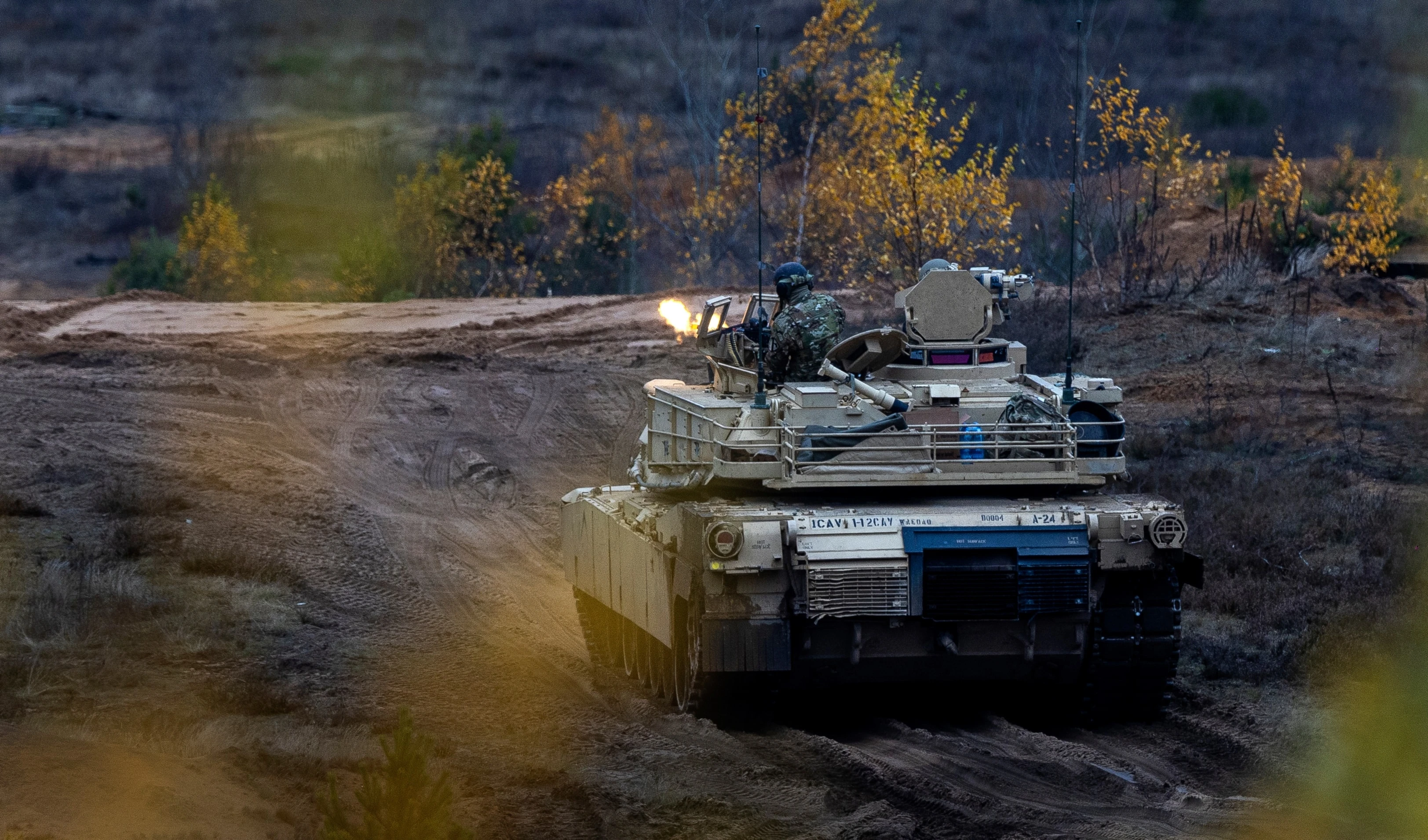Ex-US Subic Bay militarization revives Cold War posturing near China
Subic Bay’s Agila Subic Shipyard, operated by Hyundai Heavy Industries and backed by US and South Korean investment, is reshaping regional defense logistics amid rising tensions in the South China Sea.
-

A man on a jetski passes by the USNS Big Horn American supply ship docked near a shipyard in what used to be the US's largest overseas naval base at the Subic Bay Freeport Zone, northwest of Manila, Philippines, Feb. 6, 2023 (AP)
The reactivation of Subic Bay, once home to the largest overseas base of the United States Navy, signals a concerning shift in regional dynamics as Washington and its allies intensify military preparations near Chinese maritime boundaries.
The revival is centered on the Agila Subic Shipyard, now operated by Hyundai Heavy Industries, under the banner of a regional economic and defense partnership. However, the move raises alarm over renewed Cold War-style military posturing in the Asia-Pacific.
Subic Bay reclaims role in Indo-Pacific
More than three decades after the US military withdrew from Subic Bay, the area is undergoing a significant revival. The development is being driven by a mix of US and South Korean investment, alongside strong backing from the Philippine government.
The shipyard and logistics hub now serve as a potential staging ground for allied forces amid increasing friction in the South China Sea.
From bankruptcy to revival
The Agila Subic Shipyard now occupies a vast facility that was originally developed by South Korea’s Hanjin Heavy Industries. Once one of Southeast Asia’s largest shipbuilding centers, the site fell into decline after Hanjin’s bankruptcy in 2019.
Following the collapse, a high-profile bidding war reportedly unfolded between US and Chinese entities.
Ultimately, Cerberus Capital Management, an American investment firm, took control of the yard, edging out Chinese competitors and ensuring that Subic Bay would remain under the influence of allied powers.
US-South Korean investments boost Philippine defense capabilities
Since its revival, the shipyard has attracted a range of tenants, including the Philippine Navy, US defense firms, and various commercial maritime companies. Both commercial and naval shipbuilding have become central to expansion efforts at the site.
In addition to the shipyard, US and Philippine officials have approved the construction of a separate ammunition plant within the Freeport Zone. The facility is being described as the world’s largest weapons manufacturing hub, allegedly aimed at enhancing Philippine self-reliance and US regional readiness.
US President Donald Trump praised the project, stating it is “very important,” while Philippine President Ferdinand Marcos Jr. highlighted its role in supporting Manila’s drive for a modern and self-sufficient military.
Strategic significance amid South China Sea tensions
The Freeport Zone, created after the US military’s departure in 1992, has recently become a focal point of renewed strategic interest. Beyond shipbuilding and munitions production, the area now also hosts a US Marine Corps logistics hub.
The renewed activity at Subic Bay comes at a time when regional tensions, particularly in the South China Sea, are escalating. Just last week, the Chinese military warned the Philippines against provocations following routine patrols it conducted in the South China Sea on Sunday.
A Chinese military spokesperson said the Philippines must "immediately stop provoking incidents and escalating tensions" in the South China Sea. "We sternly warn the Philippine side to immediately stop provoking incidents and escalating tensions in the South China Sea, as well as bringing in external forces for backing such efforts that are destined to be futile," the spokesperson stated.
Expert reactions, official statements
MaryKay Carlson, US ambassador to the Philippines, posted on X, "Shipbuilding is back at the Agila Subic Shipyard! Honored to join [Philippine] President Marcos [South Korean] Ambassador Lee for the HD Hyundai steel cutting ceremony, highlighting Subic Bay's strategic role in the Luzon Economic Corridor."
Maritime analyst Brent Sadler also shared that "China was eyeing the port with bids to take over the [formerly Hanjin] yard. This would have been problematic for the U.S. and the Philippines security —especially in sustaining naval presence pushing back on Chinese encroachment nearby in the South China Sea. The deal brokered in 2018 ensured that didn't happen. A case of naval statecraft leveraging economic levers."
Meanwhile, President Donald Trump commented following talks with President Marcos in July, saying, "It's very important. Otherwise, we wouldn't have approved it."
Read more: Senator says US facing gravest threats since pre-WWII era

 4 Min Read
4 Min Read










